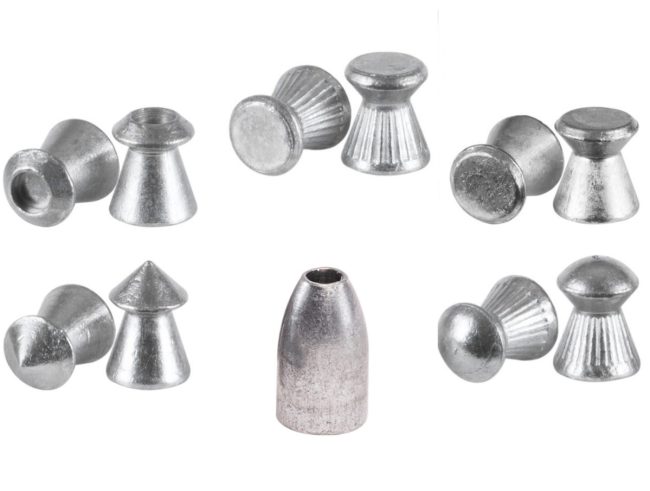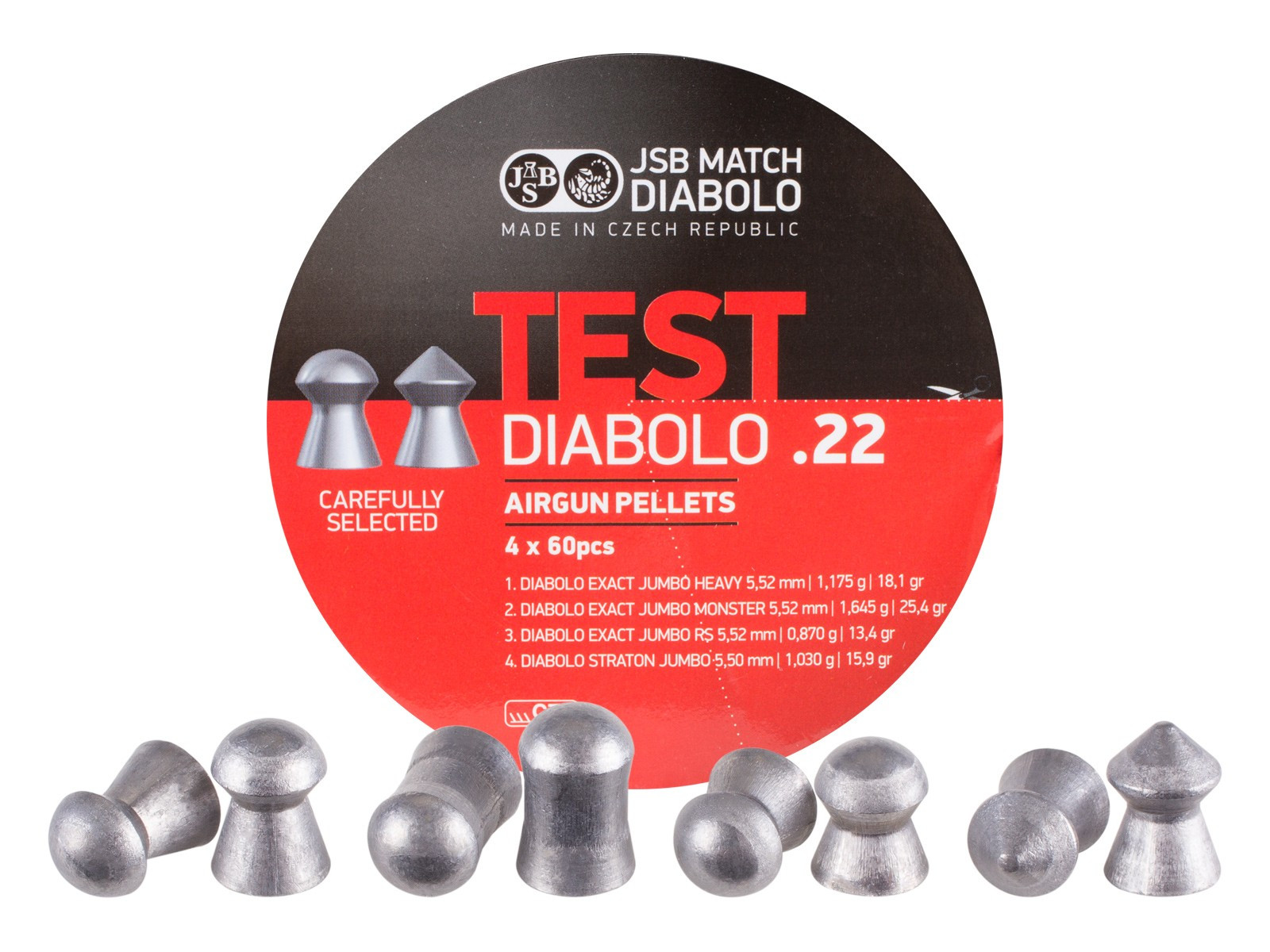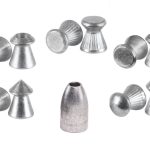
Pellets are not at all like bullets. Compare the various .22 LR bullets on the shelf to the number of different .22 cal pellets. At last count, we have about 70 different .22 caliber pellets on our testing shelf. They come in all shapes, sizes, and weights. And we haven’t even begun to talk about slug options! So why are there so many different types of pellets? It’s because there are so many different types of airguns, each with their own unique barrels, power plants, and operational parameters. The bottom line is that pellet choice has a direct relationship with performance and accuracy. Let’s get into it.
Hunting, Precision, or Plinking
The beauty of pellet types lies in their versatility. We have wadcutter, pointed, domed, and hollow point, each with its unique benefits for hunting, precision, or plinking. We understand that this might take time to decide which pellet to buy for your airgun, but bear with us for a moment, and we’ll guide you through.
Irrespective of your intended use, accuracy is always the ultimate goal. Perhaps with a touch of affordability for plinking, but even then, if a cheap pellet fails to hit the target, it’s not very effective, is it?
Shapes, Weights, and Performance
Let’s get into how each shape affects performance and accuracy, starting with wadcutters. Wadcutter pellets have the highest drag and are very good for close-range, lower-velocity airguns and paper punching. Wadcutter pellets cut really nice clean holes in paper targets that are easy to see and score if you are shooting competitively.
Traditional pointed pellets tend to slice through the air and deliver better penetration on hard and soft targets. They are often accurate enough up close but tend to get less accurate at greater ranges. Pointed pellets have always been a wildcard. Your airgun may love them or hate them. It will come down to testing.
Domed pellets generally deliver the best consistency at all ranges and are the most compatible across a wide range of airguns. Some of our favorites are the 18.13gr JSBs, the 14.66gr H&N Field Target trophies, and the 14.5gr RWS Superdomes. The domed shape is stable all the way out to 100 yards and beyond.
Hollow Point pellets, often considered hunting pellets, are all about imparting maximum energy on game. The hollow point is designed to expand on impact, creating a larger wound channel. It also helps reduce penetration and prevent pass-through. The hollow point pellet classification has ballooned dramatically over the past decade with exotic pellets like the JSB Hades, H&N Baracuda Hunter Extreme, and the Crosman Piranhas. Where hollow points used to simply be a hollow divot in the head of the pellet, we now have everything from jagged teeth to what looks like a nuclear warning symbol. Like pointed pellets, hollow point pellets can be a wildcard. But because most are based on a domed pellet design, the 15.89gr JSB Hades, for example, are a variation of the 15.89gr JSB Domed pellets; they tend to be more compatible and consistently accurate across a wider range of airguns.
And Then There Were Slugs
This article is about how “pellet” choice affects performance. Well, we may want to start considering the phrase “airgun ammo” because while airgun slugs are not pellets, they are also not going away. Airgun slugs are mainstream and provide some real performance advantages if your airgun can shoot them well. They are generally pickier than pointed pellets, and finding the right slug isn’t just difficult; it can be impossible because some airguns simply can’t drive them with enough velocity or stability.
We have other articles dedicated to slugs and slugs vs. pellets. So, if you are interested in airgun slugs, please be sure to read those, as they should be able to help.
Narrowing Down the Options
The most effective way to determine which shape, weight, and size are ideal for your airgun is to consider some pellet sample packs. Many pellet manufacturers such as H&N, JSB, RWS, and Gamo offer sample packs of their pellets, with H&N providing several excellent options (including slugs) in various calibers and head sizes. Sample packs allow you to test different pellets and see which ones perform best in your airgun without having to buy full tins of each pellet.
If you have more questions, please don’t hesitate to reach out to us here or take a look at our definitive guides where we test airguns and help you get a head start on pellet choice, performance expectations, and best use case on many industry-leading airguns.

